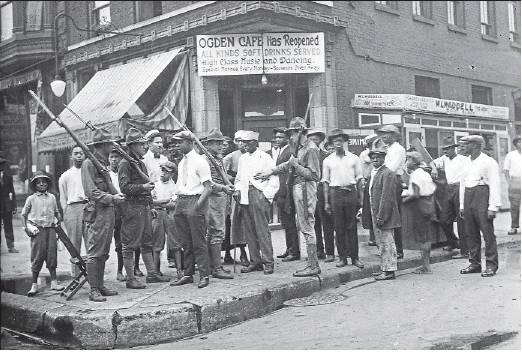‘RED SUMMER’
Violence, deaths of hundreds of blacks in 1919 remembered
By Jesse J. HollandAmerica in the summer of 1919 ran red with blood from racial violence, and yet today, 100 years later, not many people know it even happened.
It flowed in small towns like Elaine, Ark., in medium-size places such as Annapolis, Md., and Syracuse, N.Y., and in big cities like Washington and Chicago. Hundreds of African American men, women and children were burned alive, shot, lynched or beaten to death by white mobs. Thousands saw their homes and businesses burned to the ground and were driven out, many never to return.
It was branded “Red Summer” because of the bloodshed and amounted to some of the worst white-on-black violence in U.S. history.
Beyond the lives and family fortunes lost, it had far-reaching repercussions, contributing to generations of black distrust of white authority. But it also galvanized blacks to defend themselves and their neighborhoods with fists and guns; reinvigorated civil rights organizations like the NAACP and led to a new era of activism; gave rise to courageous reporting by black journalists; and influenced the generation of leaders who would take up the fight for racial equality decades later.
“The people who were the icons of the civil rights movement were raised by the people who survived Red Summer,” said Saje Mathieu, a history professor at the University of Minnesota.
For all that, there are no national observances marking Red Summer. History textbooks ignore it, and most museums don’t acknowledge it. The reason: Red Summer contradicts the post-World War I-era notion that America was making the world safe for democracy, historians say.
That could change. A monument has been proposed in Arkansas. Several authors have written about the bloody summer. A Brooklyn choral group performed Red Summerthemed songs like “And They Lynched Him on a Tree” in March to commemorate the centennial. At the National World War I Museum and Memorial in Kansas City, Mathieu and author Cameron McWhirter plan to present some of their findings July 30.
Researchers believe that in a span of 10 months, more than 250 African Americans were killed in at least 25 riots across the U.S. by white mobs that never faced punishment. Historian John Hope Franklin called it “the greatest period of interracial strife the nation has ever witnessed.”
The bloodshed was the product of a collision of social forces: Black men were returning from World War I expecting the same rights they had fought and bled for in Europe, and African Americans were moving north to escape the brutal Jim Crow laws of the South. Whites saw blacks as competition for jobs, homes and political power.
Jesse J. Holland is an Associated Press writer.
